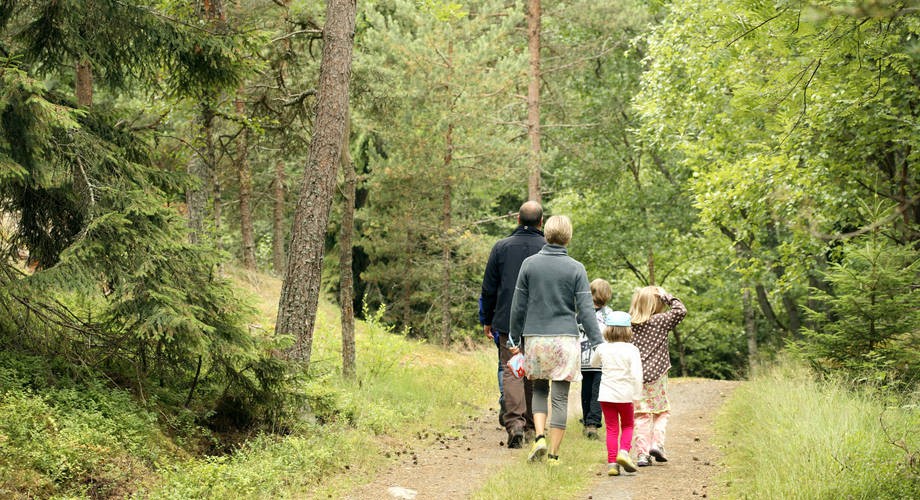Ticks are active from early spring to late autumn - remember protective measures and tick check after being out in nature

Ticks are active when the temperature is above 5 degrees, and they are found across Finland. The highest number of diseases spread by ticks is detected in the summer and autumn. Proper protection and performing a tick check after being active in nature, are effective measures of preventing diseases spread by ticks.
In Finland, ticks mainly spread Lyme borreliosis and tick-borne encephalitis
In Finland, the most common diseases spread by ticks are Lyme borreliosis and tick-borne encephalitis (TBE). In approximately half of the cases, the typical symptom of Lyme borreliosis is a red and expanding rash, but Lyme borreliosis may also be asymptomatic, or symptoms can be similar to normal flu. There is no vaccine against Lyme borreliosis; the disease is treated with antibiotics. The Finnish Institute for Health and Welfare's national infectious diseases register and the primary health care outpatient care notification register, or AvoHilmo, are notified annually of about 7,000 borreliosis cases.
The clinical picture for tick-borne encephalitis consists of two stages. Usually, about a week after the bite, the patient has fever, nausea, and is feeling ill. This phase usually lasts approximately 4‒7 days, and the majority of infections end here. Only 20‒30 percent of patients develop the actual encephalitis after a fever-free period of around a week. The treatment of the disease is symptomatic, and encephalitis requires hospital treatment.
Annually, approximately 60 to 90 TBE cases are reported to the Finnish Institute for Health and Welfare's national infectious diseases register, and the risk of the disease varies by region. In risk areas, an average of 1–2 percent of ticks carry tick-borne encephalitis. There is a vaccine against TBE, and the residents of the risk areas receive it free of charge from the health centre.
Performing a tick check protects especially against Lyme borreliosis
It takes several hours for borreliosis-induced bacteria to move from ticks to the human body. Therefore, removing the ticks within 24 hours of attachment can significantly reduce the risk of borreliosis.
This is how you perform a tick check:
- Do a tick check once a day after you or your child have been in nature, in areas with ticks.
- Check the skin throughout and pay particular attention to the armpits, groin and knee bends, bellybutton and waist area, scalp and hair, ears and around the ears.
- Also check clothes for stuck ticks. Also check the skin and fur of pets, as they can carry ticks indoors. If necessary, discuss the prevention of ticks in pet animals with the local veterinarian in more detail.
- If you find an attached tick, remove it immediately by grasping it as close to the skin surface as possible, and pulling it smoothly away from the skin. Wash and disinfect the bite site and mark the day in the calendar to keep it in memory if necessary.
Proper clothing protects from all diseases transmitted by ticks
Remember these when you are spending time in nature:
- Dress in light-coloured, long-sleeved and long-legged clothes, as ticks stand out better from light-coloured clothes.
- Put the pant legs inside the socks.
- Wear long boots.
- Use applied insect repellents as additional protection for exposed skin areas.
"Many Finns are concerned about the diseases spread by ticks, and assess the risk of, for example, TBE infection much higher than it really is. The risk should not be underestimated, but it should not be exaggerated either, and there is no need to limit spending time in nature in fear of ticks. With the help of the right kind of protection and performing a tick check, you can enjoy nature in peace, "says Henna Mäkelä, Researcher at the Finnish Institute for Health and Welfare (THL).
Additional information
What is borreliosis?
(THL)
What is tick-borne encephalitis (TBE)?
(THL, in Finnish)
Map of TBE prevalence and vaccination recommendations by region
(THL, in Finnish)
Test your knowledge of diseases transmitted by ticks
(THL, website in Finnish, test also in English)
Henna Mäkelä
Researcher
Finnish Institute for Health and Welfare
Tel. +358 (0)29 524 7488
[email protected]



